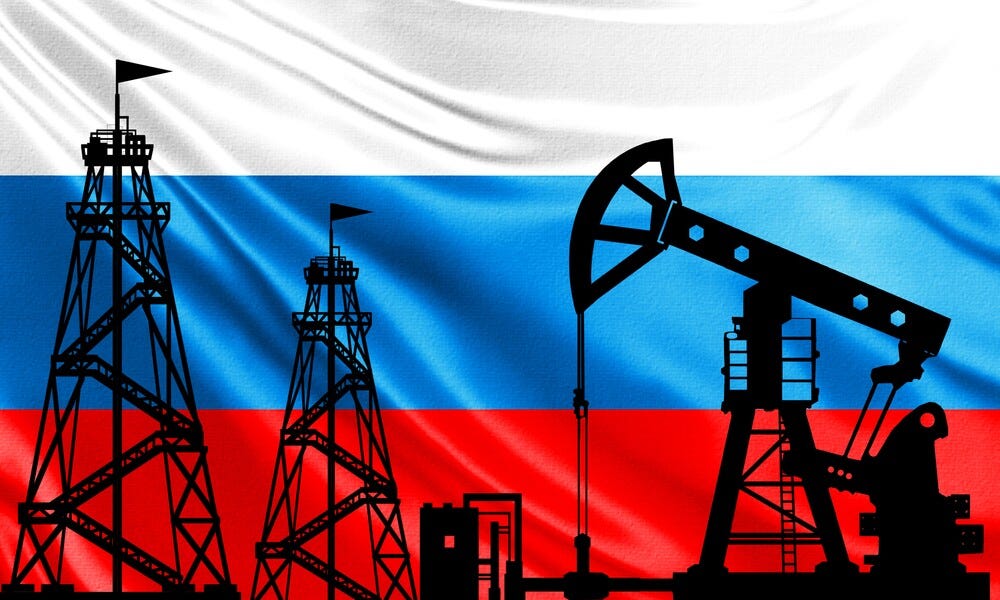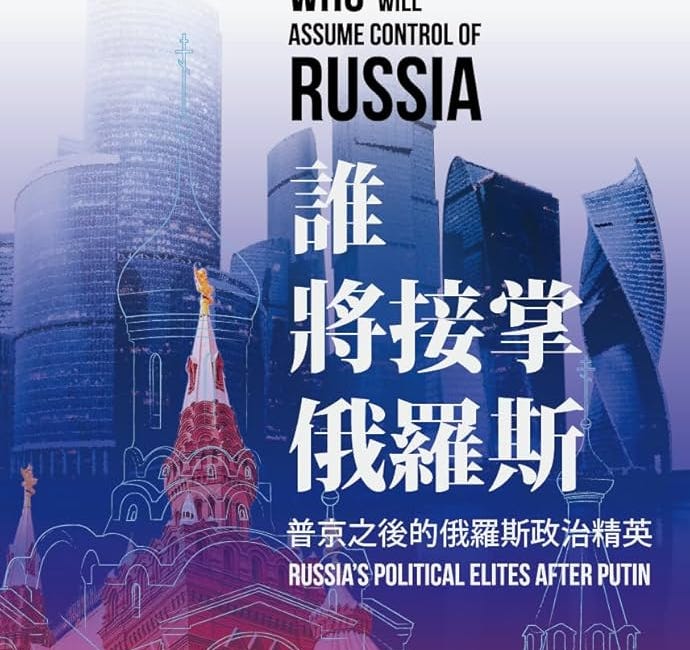Han Yichen: Structural weaknesses behind Russia’s fuel crisis
CICIR researcher on how rising demand, disrupted refineries, and financing constraints have combined to trigger Russia’s fuel crunch—and will make it a recurring one.
It’s not often that we see an analysis coming out of a top state-run think tank dedicated to examining a challenge facing Russia in its ongoing war in Ukraine.
Here is one from Han Yichen, Associate Research Professor at the Institute of Eurasian Studies, China Institutes of Contemporary International Relations (CICIR), published in CICIR’s WeChat blog.
CICIR describes itself as
China Institutes of Contemporary International Relations (CICIR) is a longstanding, extensive and multifunctional research and consultation complex focusing on international strategic and security studies. It covers all geographic areas and major strategic and comprehensive issues in the world. It opened up to the public in 1980 as China Institute of Contemporary International Relations and was renamed in 2003.
CICIR has a staff about 300, including researchers, administrative and logistic personnel, whom work for 16 institutes, a number of centers and several offices such as Department of International Exchanges, Center for World Information and References, etc.. For years, it has carried out wide-ranging, thorough and high-end international academic exchanges. It was authorized to confer master’s and doctoral degrees. It publishes three academic journals of Xiandai Guoji Guanxi, Contemporary International Relations and China Security Studies. In 2015, CICIR was designated as a pilot unit to build up China Top Think Tanks.
产油大国陷入燃油危机:俄罗斯的能源困局
Oil Giant in Fuel Crisis: Russia’s Energy Predicament
Recently, fuel prices in Russia have repeatedly reached record highs. On 17 September 2025, wholesale prices for RON-92 and RON-95 on the Saint-Petersburg International Mercantile Exchange (SPIMEX) once again set historical records, having risen by more than 40 per cent since the start of the year. As a major energy producer, Russia operates over one hundred refineries with a combined annual capacity of approximately 300 million tonnes, in principle sufficient to meet domestic fuel demand. How, then, has this fuel crunch arisen?
The proximate cause lies in the sharp collision between surging demand and falling supply. On the demand side, strong summer travel persisted. Since July, ongoing Ukrainian drone attacks on transport infrastructure—airports and railways—have disrupted major aviation hubs, including Moscow and St Petersburg, prompting a marked shift towards car travel. In addition, the onset of the autumn harvest has pushed agricultural fuel consumption to seasonal peaks, with usage by farm machinery rising notably in key grain-producing regions such as Krasnodar Krai.
On the supply side, the constraints are even more acute. First, refining capacity has been severely impaired. Scheduled maintenance at many refineries between July and September has held operations at reduced throughput, leaving them unable to meet seasonal peaks. Concurrently, repeated Ukrainian strikes on refining infrastructure have disrupted facilities operated by major energy firms, including Rosneft and Lukoil. Among the affected sites, Rosneft’s Novokuibyshevsk Refinery is a principal supplier of fuel to south-western Russia, Crimea, and the conflict zones in eastern Ukraine, while the Ryazan Refinery plays a pivotal role in serving the central regions. Additional attacks have targeted refining assets in Krasnodar Krai and the Komi Republic, as well as the Unecha pumping station in the Bryansk region, a critical node on the Druzhba oil pipeline. Estimates suggest that roughly 11 to 14 per cent of Russia’s total refining capacity has been taken offline.
Secondly, market mechanisms have failed. Since the spring, Russia’s economic growth has slowed markedly, and the consensus expectation of subdued summer fuel demand discouraged precautionary stockbuilding. Elevated central bank interest rates have further raised borrowing costs, limiting merchants’ ability to carry inventories and weakening the market’s capacity for self-correction. Following the refinery strikes, fears of impending shortages spread, prompting precautionary buying and hoarding that intensified upward price pressures. The effects have been particularly acute in remote eastern and southern regions, where large enterprises do not supply directly: most filling stations were forced to procure high-priced fuel via mercantile exchanges. Unable to pass through commensurate retail price increases, many curtailed supply to avoid losses, thereby deepening the supply–demand imbalance.
This is not Russia’s first experience of a fuel crisis. Recurring episodes of “shortages” have laid bare entrenched structural weaknesses within the country’s energy sector.
First, Russia’s refining industry is in pressing need of modernisation. For decades, the industry has prioritised crude exports while neglecting downstream upgrading, leading to growing structural vulnerabilities. One major issue is severely ageing infrastructure: roughly 60 per cent of assets are more than 25 years old, resulting in frequent breakdowns and high maintenance costs.
Also, many large refineries were constructed with substantial European and American involvement, and the sophisticated equipment required for oil processing and petrochemicals has largely been imported. The industry therefore remains heavily dependent on Western process technologies. Although Russia has accelerated import substitution, the localisation rate for refining equipment had reached only about 45 per cent by 2024; under EU technology sanctions, shortages of equipment, spare partsm and catalysts have become acute.
Financing presents a further constraint. Stringent Western restrictions on investment in Russia’s energy sector have pushed refiners towards high-interest domestic borrowing, straining balance sheets, compressing margins, and severely limiting technological upgrades. As sanctions persist, even maintaining existing facilities is becoming increasingly difficult. In 2024, refinery throughput in Russia fell to 267 million tonnes, the lowest level in twelve years.
Secondly, there is a regional imbalance in fuel supply and demand. Russia’s oil resources, refining capacity, and consumers are concentrated in the central and north-western regions, while development in the south, East Siberia and the Far East lags behind, leaving local refining capacity insufficient. In the current episode of fuel crisis, shortages have been most acute in the south and the Far East. The latter consumes roughly 6 million tonnes of fuel annually, yet its two major refineries produce under 4 million tonnes, leaving a deficit of more than 2 million tonnes. This gap has long been bridged by rail shipments from the west; however, limited rail capacity and high transport costs render the Far East particularly vulnerable to localised shortages and price spikes. Since the outbreak of the Russia–Ukraine conflict, Russia’s economic cooperation has shifted eastwards, further lifting fuel demand in the Far East. Simultaneously, rail logistics have prioritised military movements, resulting in shortages of tank cars and exacerbating bottlenecks across the logistics network.
Third, tensions between the government and fuel producers over pricing are pronounced. Russian society is highly sensitive to fuel costs, and stabilising them is critical for social stability. To this end, the government operates a price-stabilisation regime: taxing oil companies when export profits are high and providing subsidies when domestic prices surge, thereby encouraging increased domestic supply and limiting price volatility. In principle, the scheme balances social stability with corporate profitability; in practice, however, it has repeatedly become a locus of contention between the government and fuel producers, and price controls have frequently distorted market signals.
The fuel crisis of 2023 was precipitated by the government’s cancellation of subsidies. From January to July 2025, falling global oil prices and an appreciating rouble reduced government transfers to oil companies to 604.6 billion roubles—around 46 per cent lower year on year. In August, the increase in domestic fuel prices exceeded the statutory threshold for subsidy activation, making it likely that the government would decline to disburse funds. Yet producers face heavy tax burdens, rising maintenance costs and sharply compressed margins; in an effort to offset the shortfall, some resorted to stockpiling and curtailment, thereby creating conditions for further price rises.
To secure subsidies, firms have repeatedly pressed for revisions to the parameters of the scheme and an expansion of its coverage. Such fluctuations in the price-stabilisation framework have heightened market uncertainty. Should the parameters be amended, the state-sanctioned ceiling on domestic fuel price movements would rise, potentially prompting another increase in exchange-traded prices.
Overall, the fuel crisis epitomises the broader challenges confronting Russia’s energy sector, highlighting both the deep-seated vulnerabilities in energy security exposed by the ongoing conflict and the country’s longer-term security and economic difficulties.
On the one hand, Ukraine’s cross-border strikes are intensifying, employing asymmetric warfare to extend the costs of war into Russia’s socio-economic sphere and markedly elevating domestic security risks. Energy infrastructure is not the only target: airports and railways have also been repeatedly hit. In early July 2025, multiple Russian airports came under attack, disrupting more than 2,000 flights; by late July, strikes on stations, power systems, and rail networks had delayed over 200 trains. These incidents expose significant gaps in Russia’s air-defence capabilities, which have thus far failed to protect critical infrastructure effectively. Should drone attacks persist, Russia will face recurrent fuel crises.
On the other hand, energy and economic pressures are mounting. Oil is Russia’s economic lifeline and fiscal mainstay, yet the sector confronts not only short-term price volatility but also long-term challenges to sustaining production capacity. Under prolonged sanctions, the industry has struggled to modernise equipment; easily accessible reserves are being depleted; and maintaining output is becoming increasingly difficult. With oil prices declining, Russia’s oil and gas revenues have fallen below benchmark levels for four consecutive months. From January to August 2025, oil and gas revenues were down 20.2 per cent year on year, contributing to a federal budget deficit of 4.9 trillion roubles, already exceeding the annual target, and further constraining the resources available to support the sector’s transformation and upgrading.
Feng Yujun on Russia's elite turnover & ideological reformation
This article is the preface to 誰將接掌俄羅斯:普京之後的俄羅斯政治精英 Who Will Assume Control of Russia: Russia's Political Elites After Putin, by Feng Yujun and Zhou Churen (Kai Ming Book Store, Hong Kong, 1st ed., February 2024).
Feng Yujun on the future of Eurasia after Russia's imperial ambitions crumble
Feng Yujun, a prominent expert on Russian studies in China, published in September an article in Volume 5, 2024, of the Chinese-language Journal of Northeast Asia Studies 东北亚学刊, discussing how the war in Ukraine is redrawing the geopolitical map of Eurasia.








I've often pondered how much of this oil refinery restriction is due to the oligarchy preferring to export oil to making products for domestic market because they can hide graft and keep some of the profits outside the country much more easily.